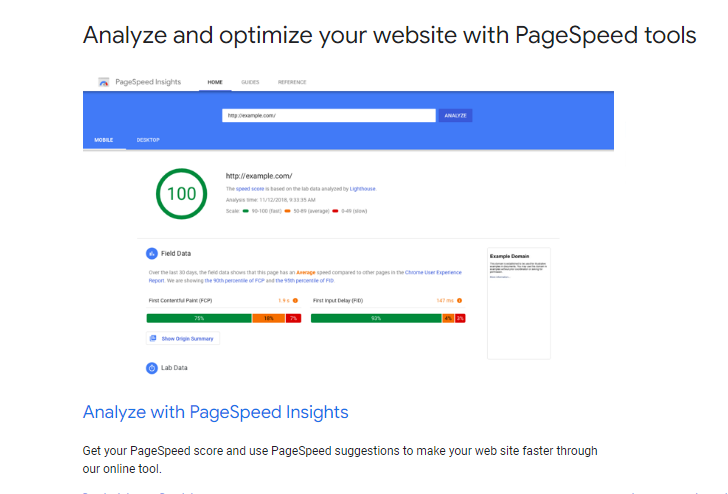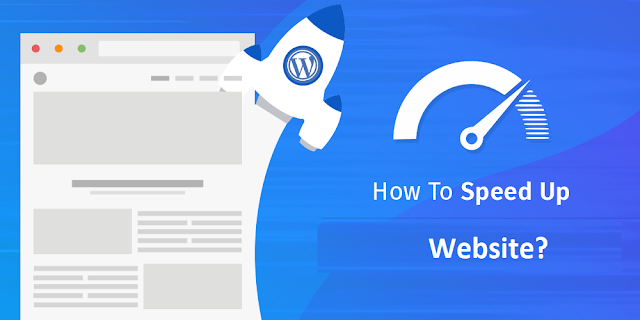Speed Up Your Website and Improve Conversion Rate
Page speed is a critical factor in digital marketing today. Unfortunately, most websites perform poorly when it comes to page speed, and that has a direct negative impact on their revenue. If you want keep visitors on your site, increase conversions, rank well in search engines, and keep visitors happy, you need to provide a great experience in terms of website speed.
It has a significant impact on:
1. How long visitors stay on your site.
2. How many of them convert into paying customer.
3. How much you pay on a CPC basis in paid search.
Website speed has a huge impact on user experience, SEO, and conversion rates. Improving website performance is essential for drawing traffic to a website and keeping site visitors engaged. Here we review steps you can take in order to make a website faster:
Steps to Speed Up Your Website
1. Skip the budget web hosting
Sure, your website will be available most of the time as it would with most any web host, but it will load so bloody slowly that your visitors will leave frustrated without ever converting into buyers.
But everyone else only wants to get in and get out of your website as quickly as possible. People want to be on your site for just long enough to do what they came to do, whether that means to get an answer, buy a product, or some other specific objective. If you slow them down even a little bit, they will be likely to hate their experience and leave without converting
How quickly (or slowly) your website loads also has an impact on organic search ranking and pay-per-click costs. In other words, if your website loads slowly, you should expect your competitors who have invested in this critical area to eat your lunch.
There are a lot of web hosts that are optimized for speed, particularly for WordPress websites, and some of them are priced similarly to the budget options. So ask around, do some testing, and invest in a web host that will give you the performance to satisfy both your visitors and Google.
2. Reduce HTTP Calls
Every file needed for a webpage to render and function, such as HTML, CSS, JavaScript, images, and fonts require a separate HTTP request. The more requests made, the slower that page will load.
Most themes load one or more CSS files and several JavaScript files. Some, such as Jquery or FontAwesome, are usually loaded remotely from another server, which dramatically increases the time it takes a page to load. This becomes even more problematic when you consider the additional CSS and JavaScript files added by plugins. It’s easy to end up with half a dozen or more HTTP requests just from CSS and JavaScript files alone.
Use below steps to Reduce HTTP Calls
- Merge JavaScript files into one file.
- Merge CSS files into one file.
- Reduce or eliminate plugins that load their own JavaScript and/ or CSS files.
- In some cases, as with Gravity Forms, you have the option to disable them from being loaded.
- Use sprites for frequently used images.
- Use a font like FontAwesome or Ionic Icons instead of image files wherever possible because then only one file needs to be loaded.
3. Include the Trailing Slash
Omitting the trailing slash on links pointing to your website, whether from external sources (link building efforts) or from within your own website, has an adverse impact on speed.
When you visit a URL without the trailing slash, the web server will look for a file with that name. If it doesn’t find a file with that name, it will then treat it as a directory and look for the default file in that directory. In other words, by omitting the trailing slash, you’re forcing the server to execute an unnecessary 301 redirect. While it may seem instantaneous to you, it does take slightly longer, and as we’ve already established, every little bit adds up.
4. Enable Compression
Enabling GZIP compression can significantly reduce the amount of time it takes to download your HTML, CSS, JavaScript files because they are downloaded as much smaller compressed files, which are then decompressed once they get to the browser.
5. Enable Browser Caching
With browser caching enabled, the elements of a webpage are stored in your visitors’ browser so the next time they visit your site, or when they visit another page, their browser can load the page without having to send another HTTP request to the server for any of the cached elements.
Once the first page has been loaded and its elements are stored in the user’s cache, only new elements need to be downloaded on subsequent pages. This can drastically reduce the number of files that need to be downloaded during a typical browsing session.
6. Minify Resources
Minifying your CSS and JavaScript files removes unnecessary white space and comments to reduce the file size, and as a result, the time it takes to download them. There are several tools available online to convert a file into a smaller, minified version of itself.
There are also several plugins available for WordPress that will replace the links in your website head for your regular CSS and JavaScript files with a minified version of them without modifying your original files, including popular caching plugins such as:
- W3 Total Cache
- WP Super Cache
- WP Rocket
It may take a bit of effort to get the settings just right because minification can often break CSS and JavaScript, so once you’ve minified everything, be sure to test your website thoroughly.
7. Optimize Media Files
Optimizing the media files on your website has the potential to improve your page speed tremendously, and doing so is relatively easy, so it’s a good investment of your time.
Optimizing Images
- Opt for the ideal format.
- Ensure images are properly sized.
- Compress the image file.
Optimizing Video
- Choose the ideal format. MP4 is best in most cases because it produces the smallest file size.
- Serve the optimal size (dimensions) based on visitors’ screen size. Eliminate the audio track if the video is used in the background as a design element.
- Compress the video file.
- Reduce the video length.
8. Utilize Caching & CDNs
Caching enables your web server to store a static copy of your webpages so they can be delivered more quickly to a visitor’s browser, while a CDN allows those copies to be distributed to servers all over the world so that a visitor’s browser can download them from the server closest to their location. This improves page speed dramatically.
if you want to maintain (or improve) your rankings and visibility, it’s essential to know how to reduce loading time of website. You must have a site that provides a quick, easy user experience.
How to measure the speed of your website
1. Google Page Speed Insights

PageSpeed Insights (PSI) reports on the performance of a page on both mobile and desktop devices and provides suggestions on how that page may be improved. PSI uses Lighthouse to analyze the given URL, generating a performance score that estimates the page’s performance on different metrics: First Contentful Paint, Largest Contentful Paint, Speed Index, Cumulative Layout Shift, Time to Interactive, and Total Blocking Time.
Each metric is scored and labeled with an icon:
• Good is indicated with a green check mark
• Needs Improvement is indicated with an orange informational circle
• Poor is indicated with a red warning triangle
Diagnostics provide additional information about how a page adheres to best practices for web development.
2. GTmetrix

It is one of the most popular tools for analyzing site speed performance. If you put a website to the test, it will provide a performance score and a report which shows the current state of the site along with some suggestions on what can be improved.



Write a Comment